Many creators dream of starting a podcast but struggle with the same hurdles. Start from setups, recording, editing, managing production time and a lot of many things.
But with the rapid rise of generative AI and voice technology, the way we create audio content is changing fast.
AI podcast generators are emerging as a game changer, helping anyone from solo creators to marketing teams turn written content into professional sounding podcasts in minutes.
Let’s explore how these tools work to help you create high-quality audio shows with ease.
AI Podcast Generators?
AI podcast generators are smart tools that use artificial intelligence to turn written text or scripts into natural sounding podcasts.
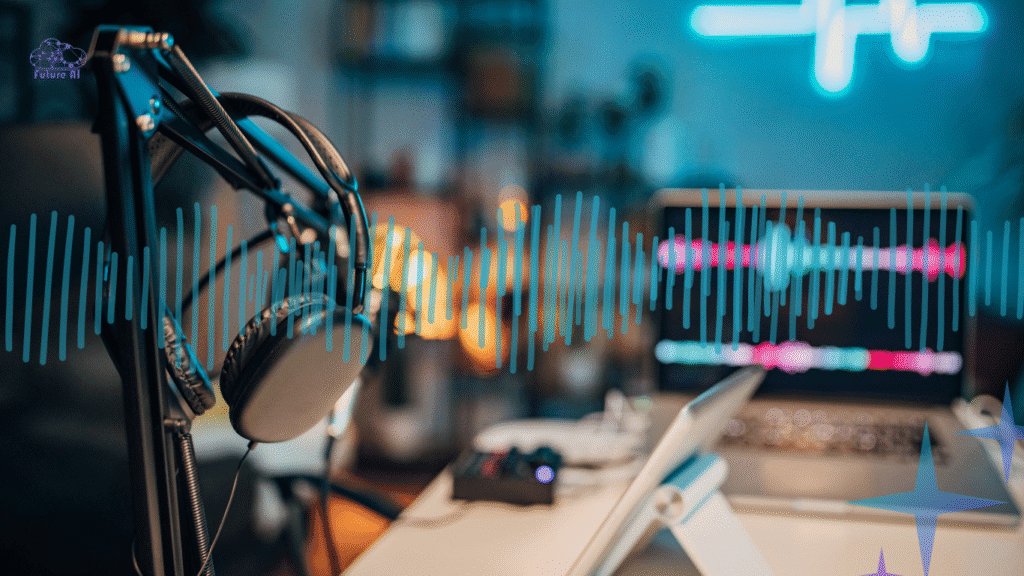
Instead of recording your voice or editing long audio files. These platforms let you paste your content, choose an AI-generated voice, and instantly create a professional audio episode. Not end here, it completes with tone, pacing, and background music.
It’s Like Woooooooooo
In short, they let you create podcasts without microphones, studios, or editing skills.
Just ideas and a script.
No Mic? No Problem. Launch Your First Podcast with Baby Podcast AI Generators.Evolution & Background of Podcast Generators
AI podcasting is built on years of innovation in text-to-speech (TTS) and generative audio technology.
Early TTS systems sounded robotic and flat, but with modern deep learning and voice cloning, AI can now produce realistic voices that mimic human emotion, tone, and rhythm.
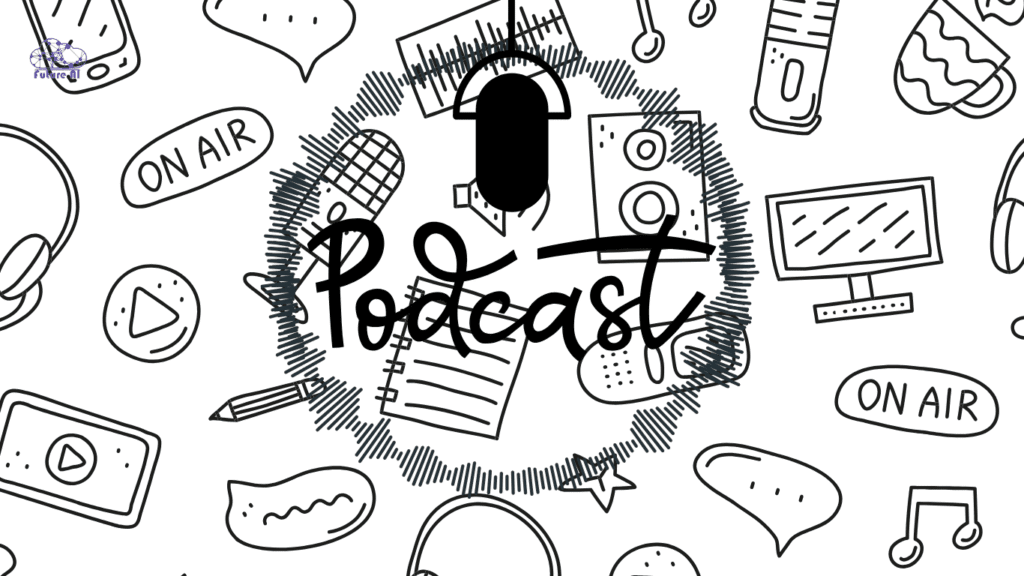
Recent advancements like OpenAI’s Voice Engine, ElevenLabs, and Resemble AI have made synthetic voices almost indistinguishable from real ones, transforming how creators produce podcasts, audiobooks, and voiceovers.
Key Components of AI Podcast Generators
Every AI podcast generator combines a few essential elements that work together to deliver studio quality results:
| Component | Description | Benefit |
| Script Input | Users upload text, articles, or outlines for conversion. | Turns your written ideas into spoken words instantly. |
| AI Voice & Tone Selection | Choose from hundreds of natural voices with customizable emotions and accents. | Matches your podcast style: from casual chat to professional narration. |
| Pacing & Timing | AI automatically adjusts pauses, emphasis, and delivery. | Makes the content flow naturally, like a human host. |
| Editing & Customization | Built-in tools for trimming, adding sound effects, or adjusting segments. | Fine-tune your podcast before publishing. |
| Publishing & Integration | Export or publish directly to Spotify, YouTube, or RSS feeds. | Saves time and simplifies distribution. |
How AI Podcast Generators Work (Step-by-Step Workflow Guide)
AI podcast generators simplify the entire podcast creation process from writing your ideas to publishing a complete episode. All within minutes. Here’s how the workflow typically looks:
1. Input Methods: Text, Blog, Script, or Transcript
You start by feeding the AI your content. This could be a:
- Written script you’ve prepared,
- Blog post you want to repurpose into a podcast,
- Transcript from a video or webinar, or
- Prompt or outline for the AI to expand into a full episode.
Example: Paste your blog article into the tool, and it will automatically divide it into podcast segments, ready for narration.
2. Voice Selection & Tone / Cadence Settings
Next, you choose how your podcast will sound. Most AI generators offer dozens: sometimes hundreds: of voices with different accents, languages, and emotions.
You can adjust:
- Tone: friendly, formal, energetic, calm
- Cadence: faster or slower speech
- Gender or accent: choose what fits your audience
Example: A marketing podcast might use an energetic American voice, while an educational one may prefer a calm, neutral tone.
Turn Scripts Into Studio-Quality Audio with Fliki AI
Try It Now!
3. AI Processing & Speech Synthesis
Once your text and voice are set, the AI engine gets to work. Using neural text-to-speech models, it converts your script into lifelike audio, adding:
- Natural pauses and intonation
- Proper emphasis on key phrases
- Sentence rhythm and flow
This step transforms plain text into realistic spoken dialogue that sounds as if recorded by a professional voice artist.
4. Editing, Pauses, and Filler Removal
After generation, most tools include built-in editors to refine your episode. You can:
- Cut unwanted sections
- Adjust pacing and volume
- Remove background noise or AI “filler” tones
- Insert intro/outro music or sponsor messages
This ensures your final output sounds clean, polished, and ready to publish.
5. Metadata, Cover Art & Episode Info
Before publishing, you’ll add the finishing touches:
- Title & Description: Helps SEO and listener discovery
- Cover Art: Upload your branded image or generate AI artwork
- Tags & Categories: Classify your podcast by topic or niche
These details make your show appear professional and help it rank higher on platforms like Spotify or Apple Podcasts.
6. Publishing & Distribution (RSS, Podcast Platforms)
Finally, export your AI-generated audio as MP3 or WAV, then:
- Publish directly via integrated platforms (e.g., Spotify, Buzzsprout, Podbean)
- Or auto-generate an RSS feed for multi-platform distribution.
Some AI podcast tools even schedule uploads, post to YouTube automatically, or create audiograms for social media promotion.
Turn Your Podcast Episodes into Scroll-Stopping Visuals with Pippit AITop AI Podcast Generator Tools
1. Podcastle: Best for All-in-One Podcast Creation
Podcastle is one of the most complete AI podcast creation platforms in 2025. It’s built specifically for podcasters, offering a smooth workflow from recording to editing to publishing.
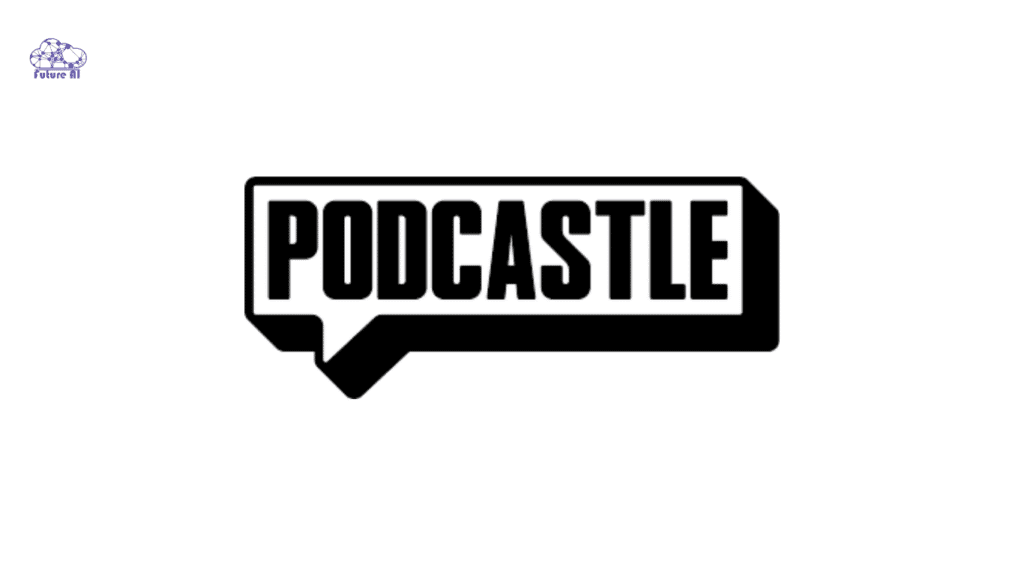
Whether you want to record an interview, generate AI voices, or clean up your audio automatically: Podcastle does it all.
| Key Features | Pros | Cons |
| AI-Powered Text-to-Speech | Excellent for beginners and pros | Lacks deep video editing or animation options. |
| Studio-Quality Remote Recording | Natural-sounding AI voices | Watermarks appear on free plan exports. |
| Automatic Filler-Word Removal & Noise Cancellation | Simple browser-based interface | |
| Audio-to-Text & Text-to-Audio Editing | High transcription accuracy | |
| One-Click Publishing |
Best For:
Podcasters and content creators who want an end-to-end audio creation suite without technical complexity.
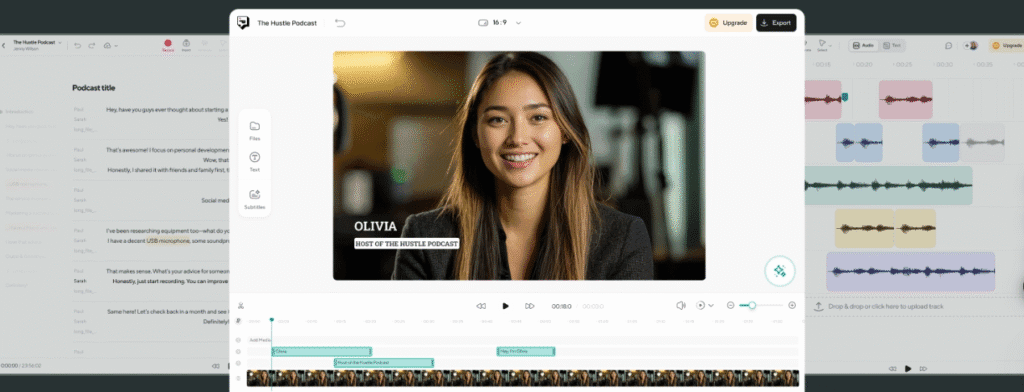
2. Descript + Overdub: Best for Voice Cloning and Precise Editing
Descript stands out as a text-based audio and video editor.
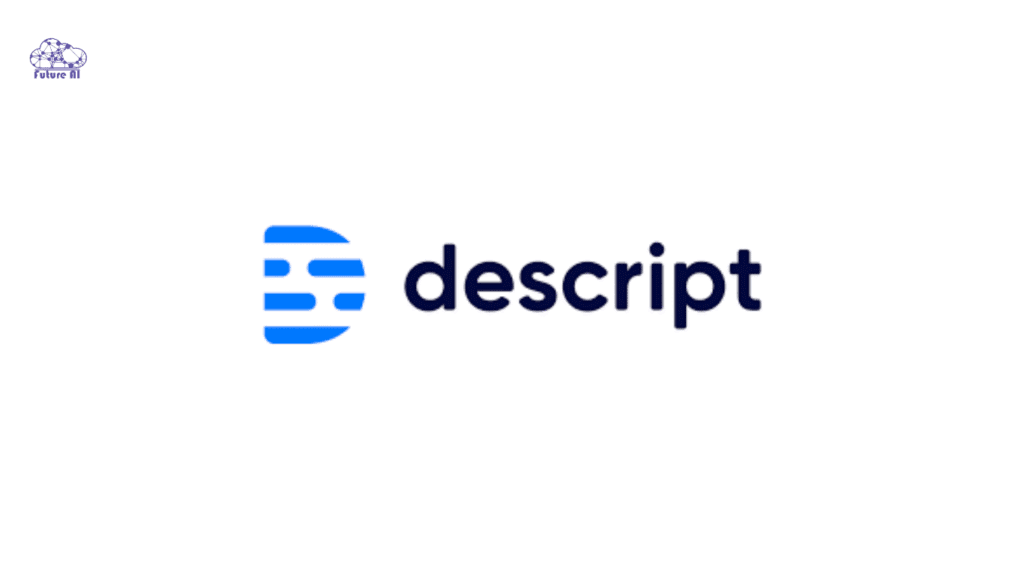
Its “Overdub” feature allows you to clone your own voice or use pre-made AI voices to record entire podcasts without re-recording every line.
| Key Features | Pros | Cons |
| Overdub for voice cloning | Professional-grade editing and collaboration | Can be expensive for teams |
| Text-based editing (edit transcript like a Word doc) | Saves huge time on retakes | Requires a bit of a learning curve |
| Auto-remove filler words and pauses | Great hybrid workflow for audio + video podcasts | |
| Screen recording and video podcasting | ||
| Collaborative editing and transcription |
Best For:
Podcasters, YouTubers, and media teams that need precise editing control and professional voice cloning.
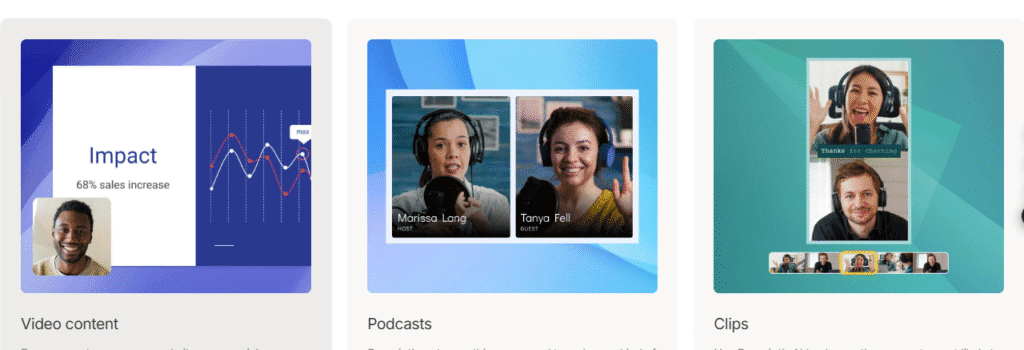
ElevenLabs: Best for Ultra-Realistic AI Voices
ElevenLabs is not a full podcast studio but a voice generation powerhouse.
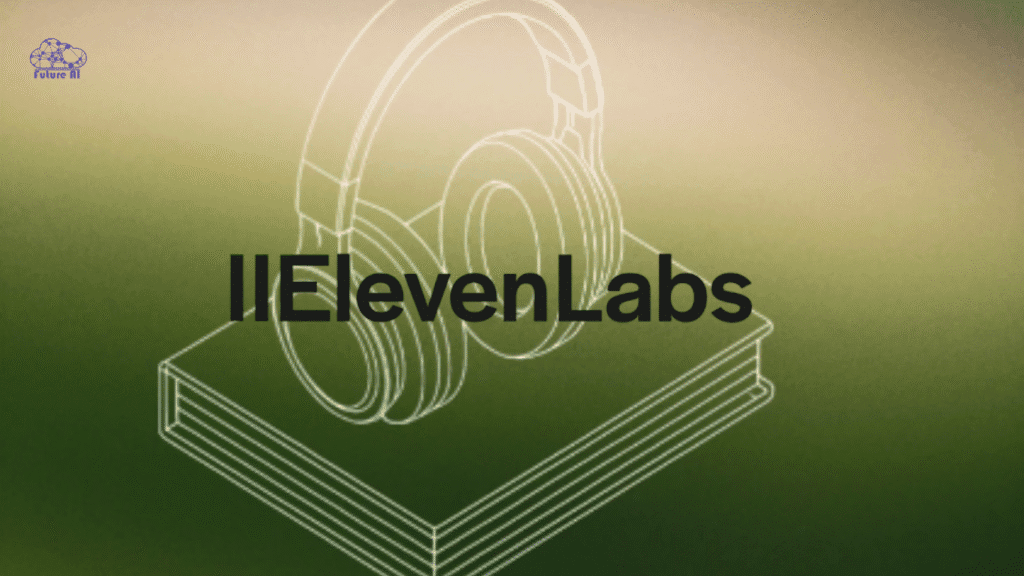
It delivers some of the most realistic and expressive AI voices on the market. Many podcast creators use it alongside editing tools like Descript or Podcastle.
| Key Features | Pros | Cons |
| Hyper-realistic AI voices | Best-in-class realism | Not a full editing or publishing tool |
| Multilingual voice generation | Works with multiple platforms via API | Pricing can rise with high usage |
| Emotion control and prosody adjustments | Supports dozens of languages and accents | |
| Voice cloning and “voice library” marketplace |
Best For:
Creators who want studio quality synthetic voices or want to enhance voice narration in other tools.

4. Jogg AI: Best for AI Video + Audio Podcasts
Jogg AI goes beyond audio: it converts blogs, scripts, or YouTube videos into AI-generated podcasts or video podcasts (vodcasts).
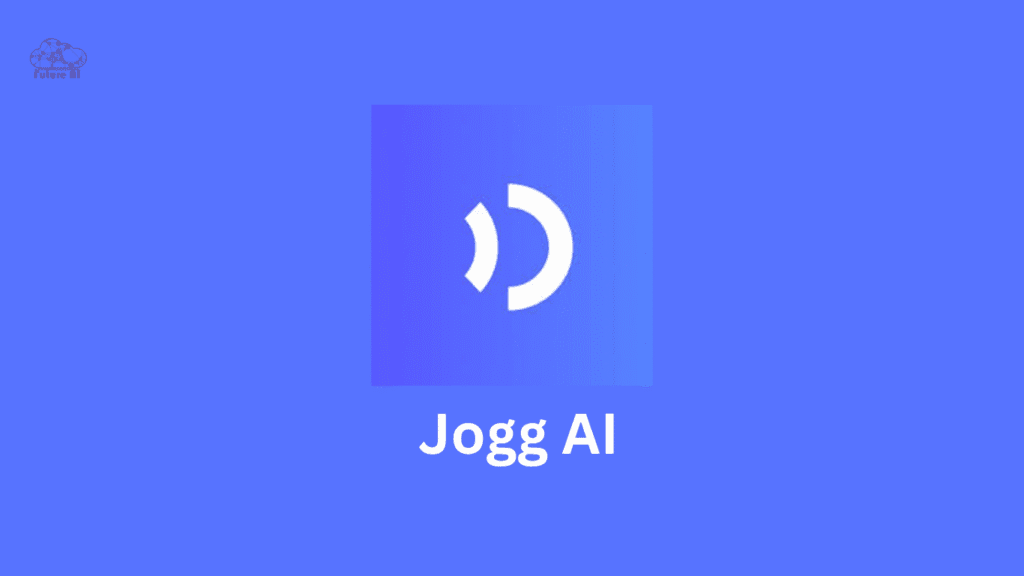
You can add AI avatars that speak your content naturally, making it ideal for creators who want to post to both YouTube and podcast platforms.
| Key Features | Pros | Cons |
| Text-to-speech and text-to-video conversion | Combines video and podcast creation | Avatars can still feel a bit robotic |
| Realistic AI avatars with lip-sync | Easy for non-technical users | Fewer advanced editing options |
| Multi-speaker podcast creation | Multilingual and localized support | |
| Automatic subtitles and translation | ||
| Podcast + YouTube video export |
Best For:
Bloggers, brands, and YouTubers who want to turn written content into engaging podcasts and videos automatically.

5. Jellypod: Best for Fast Text-to-Podcast Conversion
Jellypod focuses on speed and simplicity.
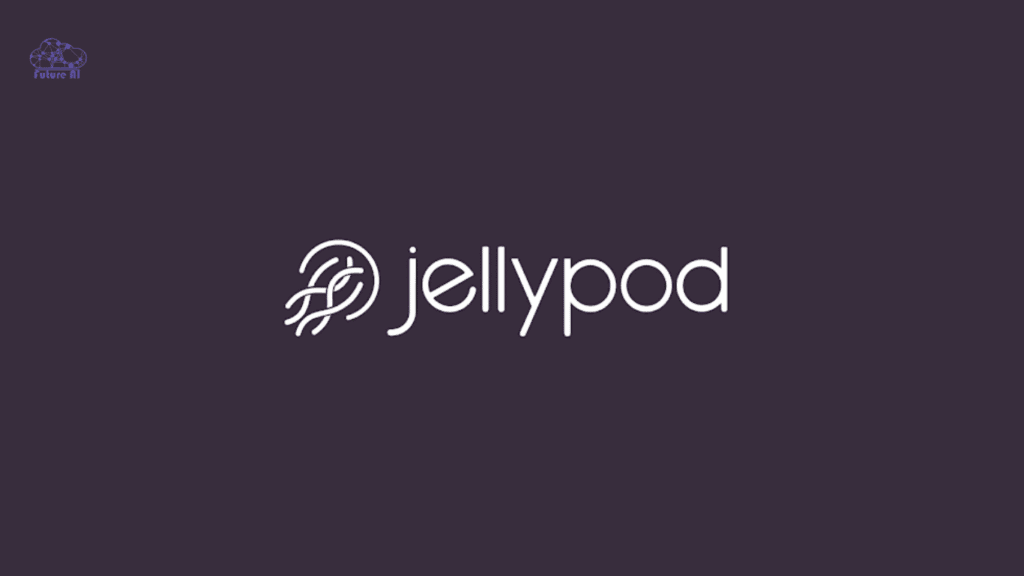
It instantly turns your blog posts or scripts into AI-narrated podcasts using natural-sounding voices. It’s lightweight, beginner friendly, and designed for quick conversions rather than detailed editing.
| Key Features | Pros | Cons |
| Fast text-to-speech podcast creation | Simple UI; great for beginners | No advanced video or avatar features |
| Script editor and auto-timing adjustment | Multi-language support | Limited control over fine editing |
| AI voice customization | Affordable pricing | |
| Podcast publishing tools |
Best For:
Writers, bloggers, and solo creators who want to repurpose blog content into podcasts quickly and easily.
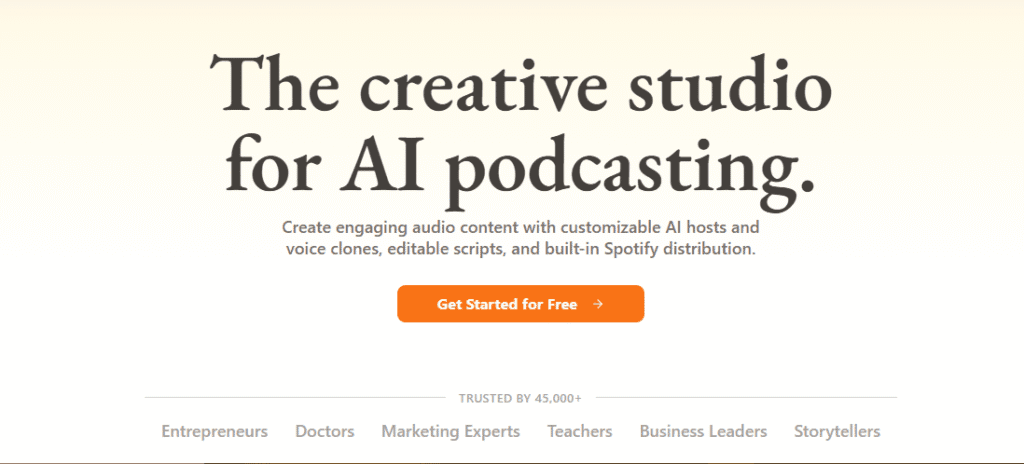
6. Wondercraft AI: Best for Instant Podcast Creation
Wondercraft AI is often called “the ChatGPT for podcasts.”
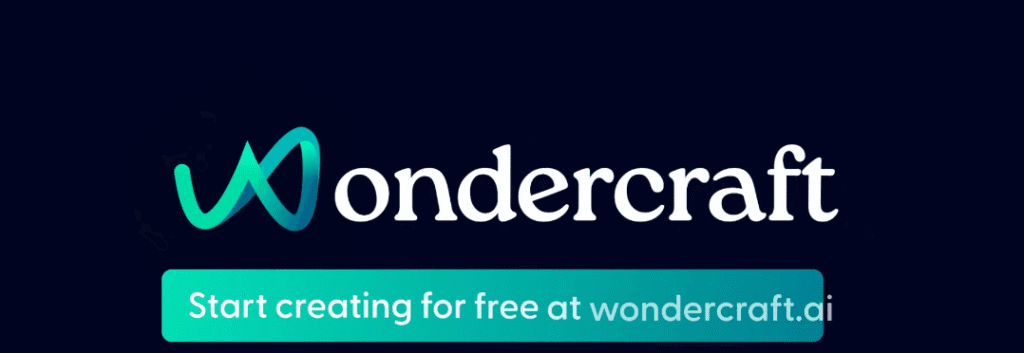
It allows users to input any text or idea and automatically produces a complete AI-generated podcast episode: including voice, pacing, and background music.
| Key Features | Pros | Cons |
| Fast text-to-speech podcast creation | Simple UI; great for beginners | No advanced video or avatar features |
| Script editor and auto-timing adjustment | Multi-language support | Limited control over fine editing |
| AI voice customization | Affordable pricing | |
| Podcast publishing tools |
Best For:
Educators, storytellers, and businesses who want to automate podcast production without recording or editing.
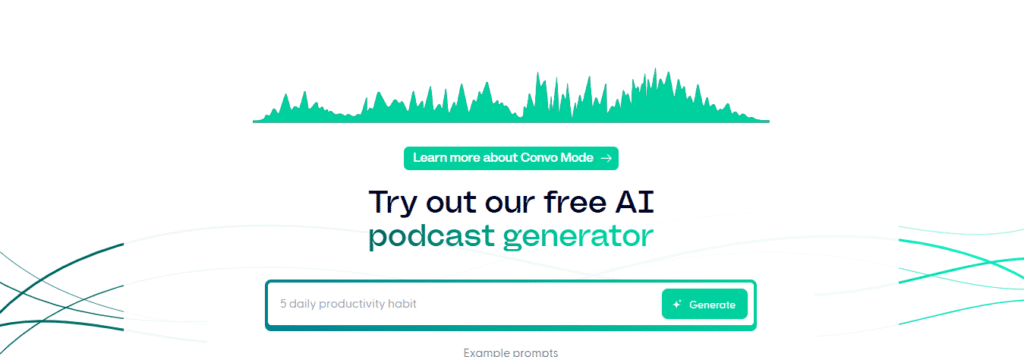
AI Podcast Generator Tools Comparison
| Tool | Voice Quality | Editing Control | Video/Avatar Support | Publishing | Ideal For | Pricing |
| Podcastle | High | Strong | Limited | Yes | Podcasters | Mid-tier |
| Descript + Overdub | Very High | Excellent | Partial | Yes | Audio + video creators | High |
| ElevenLabs | Best in class | Minimal | None | No | Voice generation | Usage-based |
| Jogg AI | High | Basic | Yes | Yes | Video podcasters | Moderate |
| Jellypod | Good | Basic | None | Yes | Bloggers, beginners | Low |
| Wondercraft AI | Very Good | Limited | None | Yes | Storytellers | Affordable |
Advantages & Limitations (Pros & Cons)
| Aspect | Advantages | Limitations | |
| Time Efficiency | Generate podcasts in minutes instead of hours: no need for recording sessions or retakes. | May still require manual fine-tuning for tone and pacing. | |
| Cost Savings | Avoid studio fees, microphones, editors, and voice-over artists. | Premium tools or API usage can add up for high volumes. | |
| Scalability | Easily create multiple episodes or series from scripts or blogs. | Large-scale automation can reduce originality if not edited well. | |
| Accessibility | Makes podcasting possible for non-technical creators, small teams, and global users. | Requires stable internet and a basic understanding of AI tools. | |
| Multilingual Support | Instantly create podcasts in several languages with native accents. | Some languages or accents may sound robotic or less natural. | |
| Quality & Realism | Constantly improving AI voices with natural intonation. | Still lacks true human emotion and spontaneity. | |
| Legal & Ethical Factors | Commercial voice rights often included in premium plans. | Must verify licensing and voice ownership before publishing. |
AI podcast generators dramatically reduce the barriers to podcasting: saving time and money: but they still need human editing for emotion, nuance, and creativity to sound authentic.
How to Use an AI Podcast Generator (Step-by-Step for Beginners)
Creating a podcast with AI is simple: even for first-timers. Here’s a complete beginner-friendly workflow:
| Step | Action | Purpose / Tips |
| 1. Write or Import Your Script | Use your blog, transcript, or custom script as the base. | Keep sentences conversational and short for better voice flow. |
| 2. Choose Voice, Pacing & Style | Select from male/female, tone (friendly, formal, energetic), and speed. | Test a few samples: the right voice sets your show’s identity. |
| 3. Generate Draft Audio | Let the AI turn your text into spoken audio. | Review for pronunciation accuracy or pacing issues. |
| 4. Edit Spoken Output | Trim silences, fix mispronunciations, and adjust pauses or emphasis. | Most platforms offer simple “text-to-edit” tools. |
| 5. Add Music, Ads & Transitions | Include intro/outro tracks or background music for branding. | Keep it subtle: don’t overpower the voice. |
| 6. Export & Publish | Download in MP3 or WAV, then upload to podcast hosts like Spotify, Buzzsprout, or Anchor. | Add metadata (title, episode number, tags). |
| 7. Promote & Iterate | Share on social media, blogs, or newsletters. | Monitor engagement and refine scripts for future episodes. |
Pro Tip:
Batch generate episodes from multiple scripts and maintain a consistent voice, tone, and publishing schedule.
Pricing, Plans & ROI
AI podcast tools vary widely in pricing: from free tiers for beginners to premium plans for commercial creators. Here’s how to evaluate the cost vs. value.
| Plan Type | What You Get | Typical Price Range (Monthly) | Best For |
| Free / Trial Tier | Limited minutes, basic AI voices, watermarked exports. | $0 – $10 | Testing and hobby creators. |
| Standard / Creator Plan | More voices, longer minutes, basic commercial use rights. | $10 – $30 | Solo podcasters and small teams. |
| Professional / Business Plan | Premium voices, multi-language, advanced editing, full commercial rights. | $30 – $100+ | Agencies, educators, and content studios. |
Tips to Maximize ROI
- Reuse scripts across formats (turn blog → podcast → video).
- Batch-generate episodes to save credits and time.
- Optimize long scripts by segmenting them into short, bingeable episodes.
- Use free tools for editing (like Audacity or Descript’s free tier) before publishing.
Even with paid plans, AI podcast generators offer massive returns in time and money: especially for content creators producing high-volume episodes.
Tips, Best Practices & Common Pitfalls
AI podcast tools make content creation faster: but to sound human and professional, you still need a few smart habits. Here’s how to get the best results while avoiding common mistakes.
| Tip / Practice | Why | Example or Pro Insight |
| Write Conversational Scripts (Less Formal) | AI voices sound more natural with casual, simple language. | Instead of “We shall discuss,” write “Let’s talk about…” |
| Use Natural Breaks & Shorter Sentences | Helps AI voices breathe and sound more realistic. | Add commas or line breaks for pauses. |
| Choose Voices That Match Your Brand / Topic | Tone consistency builds listener trust and identity. | Use an energetic voice for tech topics, calm voice for education. |
| Listen & Edit Voice Inflections or Errors | Even top AI voices can mispronounce or emphasize wrong words. | Always proof-listen before publishing. |
| Mix AI with Real Sound Elements | Adding real intros, effects, or background music enhances authenticity. | Insert a human intro clip or ambient music track. |
| Keep Backups of Scripts & Audio Files | Some tools auto-delete old projects or limit downloads. | Save local copies of every script and version. |
| Monitor Credit / Usage Limits | Many AI tools charge per minute or character. | Track usage to avoid hitting limits mid-project. |
| Test with Small Episodes First | Ensures tone, pacing, and structure work before scaling. | Produce a 3-minute pilot before committing to a full series. |
Pro Tip:
Combine AI voice + human creativity. The best results come when you use AI for speed but still fine-tune tone, music, and pacing manually.
Avoid:
Publishing raw AI audio without review: it can sound robotic and hurt your brand credibility.
FAQ’s Related Podcast AI
1. What is an AI podcast generator and can it replace hosts?
An AI podcast generator is a tool that converts text, blogs, or scripts into spoken audio using synthetic yet natural sounding voices.
While it can automate production, it can’t fully replace human hosts: especially for emotional storytelling or spontaneous discussion. Think of it as a co-host or production assistant, not a substitute for real personality.
2. Do these tools sound human?
Yes: the latest AI voices from tools like ElevenLabs, Podcastle, and Descript are impressively realistic, with tone and pacing controls.
However, subtle emotional depth and dynamic range still vary depending on the voice model and settings used.
3. Can I use them for commercial podcasts?
Most premium AI podcast tools include commercial usage rights, meaning you can legally publish and monetize episodes.
Always check the license terms for each platform: some restrict cloned or celebrity-style voices for public use.
4. How much does it cost (minutes, credits)?
Most tools use a credit or per-minute pricing model:
- Free tiers offer short test clips or limited monthly minutes.
- Paid plans usually start from $10–$30/month, unlocking more voices, longer audio limits, and commercial rights.
For professional podcasters, these tools often save hundreds in recording and editing costs.
5. Which AI podcast generator is best for beginners?
If you’re new to podcasting, start with Podcastle or Voicera: both have intuitive editors and beginner-friendly templates.
For advanced users who want custom voices or multilingual options, ElevenLabs and Descript Overdub are top picks.
6. How do you legally use AI-generated voices?
Always:
- Use voices offered directly within your chosen platform.
- Avoid cloning real individuals without consent.
- Read commercial usage policies to ensure compliance.
Proper licensing keeps your content safe, monetizable, and copyright-compliant.
7. Is editing required (auto vs. manual)?
Most AI podcast generators provide automatic noise removal and pause correction, but manual fine-tuning is still recommended.
Editing ensures pacing, tone, and flow feel human: especially if you’re publishing under your brand name.
8. Are AI podcast generators reliable? What are common issues?
They’re generally reliable for short to medium episodes, but common issues include:
- Mispronounced words or awkward pacing
- Glitches during long scripts
- Minor background noise artifacts
Pro Tip: Always preview and edit before final export: it’s the difference between “AI-made” and “studio-ready.”
Conclusion
AI podcast generators are reshaping how creators, educators, and businesses share ideas.
With the ability to turn text into studio-quality podcasts in minutes, they remove the biggest barriers: recording, editing, and production costs.
It can’t yet mimic true human emotion or improv: but it’s getting closer every day.
For most creators, it’s a breakthrough in productivity and creativity.
👉 Try an AI Podcast Generator today.